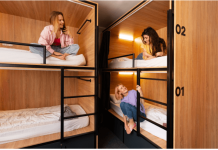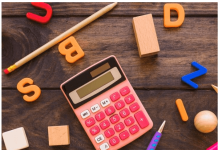Minecraft is a video game that allows you to build or destroy buildings of all kinds with different types of blocks in a three-dimensional environment through a character. This character allows you to create fantastic structures and artistic creations using multiple game modes. We are talking about a game that has desktop or tablet versions. Minecraft has a paid version and a free version, the classic version. So far, nothing strange. There are as many games on the market as possible players, as well as different game platforms. Our students play; perhaps many of those who read this article as well.
Today I want to talk about an applied gaming experience in an educational environment. This is the fantastic experience of Lara Romero with her 6th grade students and Minecraft, a game of great educational power as we will see in this article.
Contents
The game in the classroom
Although the importance of play in education has always been discussed, today I want to talk about what Americans call gamification, which is nothing other than applying the principles and mechanics of games in environments that are not properly games. As Lara explains in an article she has written for SM Conectados ,Gamification in the classroom is related to game-based learning, which gives us open contexts, new ideas and possibilities. Studies on this topic confirm that they favor the development of cognitive skills such as concentration or memory, along with psychomotor skills when working with visual skills, spatial coordination and perceptual discrimination that enhance autonomy, self-control and creativity skills.
Óscar Ray exposes some of the keys to gamification, highlighting that it is based on the mechanics of the game , that is, the rules of the games that provide pleasure, participation and commitment on the part of the players, by providing them with challenges and a path through the to go through. The main mechanics are:
- Collecting objects
- Earning points
- Comparisons and classifications
- Difficulty levels
- Feedback
On the other hand, gamification is also related to the dynamics of the game , that is, to the motivations or wishes that are expected to be achieved by the player. To achieve these motivations, the different game mechanics are used. There are many different game dynamics, but among the most used are:
- Reward
- Status
- Achievement
- Expression (or Self-Expression)
- Competition
- Altruism
As we see, the combination of wishes or motivations and the mechanics to achieve them, make the games successful. Applying these elements in classroom activities or projects would be gamification applied to education. Let’s see the experience of Lara and her students with Minecraft.
Minecraft
Minecraft began development in 2010 and its creator Marcos “Notch” Parssons allowed the community to use and modify the game from the early stages of its programming. There are two different contexts: a creative mode and a survival mode. When the game begins, a 360-degree world is created with different heights of terrain, mountains, coast and a vast sea. In the first one we only have to focus on the construction of our project. Obviously, if we are in survival mode we will have nothing and we will start with the basics, such as building tools with the materials we are given: wood, stones …
Joel Levin is a computer teacher at a New York elementary school, has spent years using this video game in his classes and has developed a version for teachers: MinecraftEDU that is used in more than 1,000 schools between New York and Finland. This version allows creating “work zones” to prepare classes and more tools, along with the possibility of moving the student on the map or sending messages.
The experience at the Alameda de Osuna School
During the 2012-13 academic year at the Alameda de Osuna School in Madrid, the 6th grade students from the hand of their Digital Skills teacher and ICT Trainer, Lara Romero , developed a project using Minecraft and which had gamification as axes , learning through play and teamwork. The idea arises from the initiative of a student who shows him a house that he had built, this being the engine of the project that is subsequently launched. It was the first time that Lara faced a project of this nature with its more than 100 students, since we are talking about a four-line educational center, a challenge for organization and management.
However, Lara does not lack experience in managing collaborative network projects. His Kiosko de Chuches , in which more than two hundred people participated, achieved recognition from the ITE Ministry of Education in 2011. An enthusiast of the projects that is currently immersed in others, such as the Digital Herbarium of 5th grade Primary; the mlearning Radio Alameda project that involves the entire center or, finally, Ralf’s Journey , a project of his 4th grade students.
To develop the Minecraft project, Lara decides to use the classic version as it is the most creative mode of the game since it allows students to use blocks for construction in an unlimited way and there are no creatures that can be hostile to players, so the main objective is to build a house.
The project
The product of the project is a house built by his students using Minecraft. This house will be built over a quarter, it will be the house of our dreams. For this, the students will be grouped in pairs, in which one of the students, with Minecraft experience, will have the role of teacher or guide of another who does not know the game. In addition, they must agree in advance on what they want to build, what they will be able to do according to their own ideas, they will have to take into account that they have a specific time and that at the end of the process they must explain how they had made their house among the two. The project, therefore, is developed through phases and cooperative work.
Once each couple had finished building their house they had to record the presentation of their product. Lara proposed using Screencast, an easy solution to record students and show their creations. This aspect of the project also allows the development of language skills. In short, not only creativity and spatial vision are worked on, but communication, teamwork, planning, and all with enormous motivation from their students.
The project was developed in the weekly space of the subject of digital skills, which involves 45 minutes a week. With so little weekly time available, it was very important that there was prior work to organize the tasks associated with the project. The final duration of the project was determined precisely by the weekly frequency of work on it.
During the development of the project, Lara used the Edmodo social network , a network they use regularly, to create a specific group on Minecraft where the most advanced students resolved the doubts of their classmates, as well as shared tutorials, some of which the the students themselves had created.
Evaluation
The project has been evaluated by both the teacher and her students. On the teacher’s part, the project was evaluated during its development: the process, creation, presentation, teamwork, organization; The final result, that is, the built houses that were shown to others in the recorded videos, was also evaluated.
The evaluation of the student has had two aspects: the individual and the collective.
-
The individual evaluation of each student, for this, evaluation lights have been used. Being the first time they were used, Lara highlights the sincerity that her students showed using this technique.
-
Cooperative evaluation , using a form that evaluated each phase of the project as a group.
Results and conclusions
You can see the results on the project page . I put one at random because it is impossible to put all of them. The results are obvious!
I ask Lara about the most important thing , in her opinion, about the project and she tells me that it has been working creativity, creation with the students and teamwork, thanks to the introduction of a video game in the classroom. I also ask him why he would recommend introducing Minecraft in the classroom and he tells me that we will understand it better by watching a video of a student of his who explains the Middle Ages in this wonderful way.
As for the main difficulties encountered, Lara comments that the main difficulty encountered was not knowing Minecraft. But his students, he says, have taught me everything they know with the humility that many of us lack. I realized that the main difficulty was not the use of the software but the management of more than 100 students working in digital and that later in class time they would have to record it.
The future of the project
During this 2013-2014 school year, Lara wants to go one step further, working on the project for tables of four students and being able to work online. In this case the challenge would increase in difficulty, since they will face the fact of building a city instead of a house. For now, we leave you a preview that your students have recorded for Radio Alameda.








